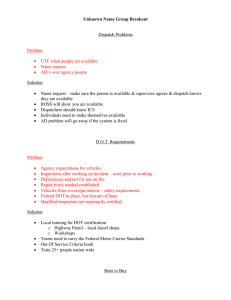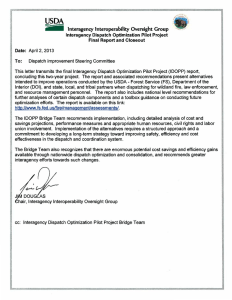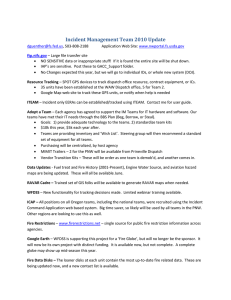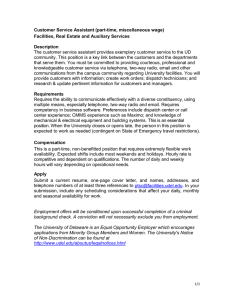Integrating Gesture and Snapping into ...
advertisement
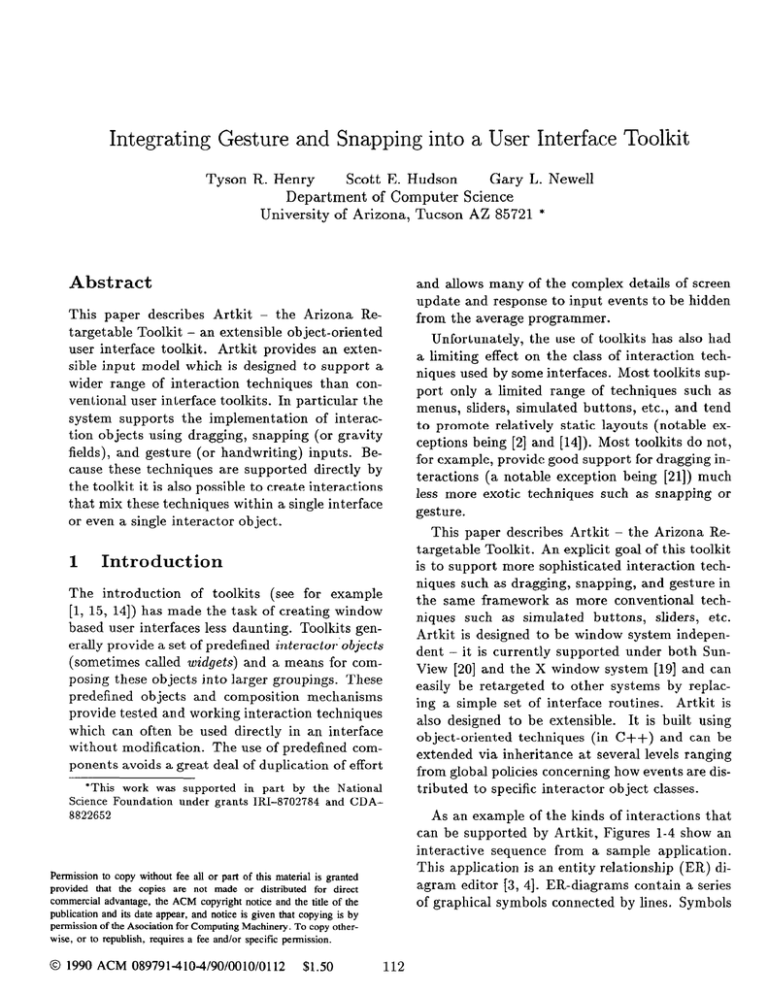
Integrating
Gesture and Snapping into a User Interface Toolkit
Tyson
Gary L. Newell
R. Henry
Scott E. Hudson
Department
of Computer
Science
University
of Arizona, Tucson AZ 85721 *
Abstract
and allows many of the complex details of screen
update and response to input events to be hidden
from the average programmer.
This paper describes Artkit - the Arizona Retargetable Toolkit - an extensible object-oriented
user interface toolkit.
Artkit provides an extensible input model which is designed to support a
wider range of interaction
techniques than conventional user interface toolkits. In particular the
system supports the implementation
of interaction objects using dragging, snapping (or gravity
fields), and gesture (or handwriting)
inputs. Because these techniques are supported directly by
the toolkit it is also possible to create interactions
that mix these techniques within a single interface
or even a single interactor object.
1
Unfortunately,
the use of toolkits has also had
a limiting effect on the class of interaction
techniques used by some interfaces. Most toolkits support only a limited range of techniques such as
menus, sliders, simulated buttons, etc., and tend
to promote relatively static layouts (notable exceptions being [2] and [14]). Most toolkits do not,
for example, provide good support for dragging interactions (a notable exception being [21]) much
less more exotic techniques such as snapping or
gesture.
This paper describes Artkit - the Arizona Retargetable Toolkit. An explicit goal of this toolkit
is to support more sophisticated interaction techniques such as dragging, snapping, and gesture in
the same framework as more conventional
techniques such as simulated buttons, sliders, etc.
Artkit is designed to be window system independent - it is currently supported under both SunView [20] and the X window system [19] and can
easily be retargeted to other systems by replacing a simple set of interface routines.
Artkit is
also designed to be extensible.
It is built using
object-oriented
techniques (in C++) and can be
extended via inheritance at several levels ranging
from global policies concerning how events are distributed to specific interactor object classes.
Introduction
The introduction
of toolkits
(see for example
[l, 15, 141) has made the task of creating window
based user interfaces less daunting. Toolkits generally provide a set of predefined interactor’objects
(sometimes called widgets) and a means for composing these objects into larger groupings. These
predefined objects and composition mechanisms
provide tested and working interaction techniques
which can often be used directly in an interface
without modification.
The use of predefined components avoids a great deal of duplication of effort
*This work was supported
in part by the National
Science Foundation
under grants IRI-8702784
and CDA8822652
As an example of the kinds of interactions that
can be supported by Artkit, Figures l-4 show an
interactive
sequence from a sample application.
This application is an entity relationship (ER) diagram editor 13, 41. ER-diagrams contain a series
of graphical symbols connected by lines. Symbols
Permission to copy without fee all or part of this material is granted
provided that the copies are not made or distributed for direct
commercial advantage, the ACM copyright notice and the title of the
publication and its date appear, and notice is given that copying is by
permission of the Asociation for Computing Machinery. To copy otherwise, or to republish, requires a fee and/or specific permission.
0 1990 ACM 089791-4104/90/0010/0112
$1.50
112
Figure 1: Drawing
I ER-magrm
m*tor
Figure 3: Connecting
Figure 2: Positioning
a Symbol
a Recognized
Symbol
e
Figure 4: Deleting
Two Symbols
a Symbol
teraction continues smoothly by allowing
to drag the object into its final position
releasing the mouse button.
include, rectangles which represent entities, diamonds which represent relationships between entities, circles or ovals which represent attributes of
entities, and triangles which represent special is-a
relationships.
the user
without
Once several symbols have been created, they
This interaction
may be connected with lines.
starts at particular connection points within each
symbol and supports a rubber-banded
line which
snaps to legal positions on other symbols as illustrated in Figure 3.
As illustrated
in Figure 1, each of the basic
components of an ER-diagram can be entered via
a hand drawn gesture. As the symbol is being
drawn, a gesture recognizer dynamically compares
the symbol with a symbol alphabet. Once enough
of the symbol has been drawn to unambiguously
recognize it, a new interactor object corresponding to the symbol is created (this form of eager
recognition is discussed, for example, in [18]). As
shown in Figure 2, the newly created object is
then placed directly under the cursor and the in-
Finally, commands can also be entered either as
gestures, or via more conventional menus. For example, Figure 4 shows the X-shaped gesture used
for deleting a symbol. Alternately,
the same command could have been invoked by selecting an object and choosing delete from a pull-down menu.
In general, the user interface designer is free to
113
mix and match input techniques to produce the
best interface.
In the next section, the overall event handling
architecture of the toolkit wilI be discussed. Section 3 will consider the specific structures used to
handle event dispatch. Sections 4 and 5 will consider snapping and gesture support respectively,
while Section 6 will consider the interactor object
library provided by the system. Finally, Section
7 will describe the implementation
of the system,
consider its limitations,
and discuss directions for
future work.
2
dispatch. The event dispatch process attempts to
deliver each low-event to one of several possible recipient objects. As described below, each eligible
object is tried in turn until some object indicates
that it has consumed the event. Events that are
not eventually consumed are discarded.
Almost all events are dispatched using one of
two general paradigms: positional dispatch or focus dispatch. Positional dispatch selects an object
to receive an event based on the position of the
locator at the time of the event (e.g., the object
under the cursor receives the event). Focus based
dispatch relies on the notion of a focus or current
object (e.g., the current text focus object receives
all events involving key presses).
While these two general paradigms for dispatching events cover most cases, there are occasions
when different paradigms are needed. For example, the current library also supports a flavor of
focus based dispatching which we call monitor focus. Under this paradigm all events are sent to
a focus object but the events are never consumed
(hence are always sent to other objects as well).
This allows the construction of objects that monitor or record events without interfering with the
rest of the interaction.
This has been used for example, to implement a crosshair style cursor in a
drawing application.
In general, we believe that there are a number of different general paradigms for dispatching
events and that it should be possible to add new
paradigms to the toolkit for special purposes. To
accomplish this, the toolkit uses an explicit object to implement each dispatch paradigm.
We
call these objects dispatch policy objects. These
objects are installed in a prioritized list. New dispatch policy objects can be created (for example
by specializing existing objects) and added to this
list at any time. When a new event arrives it is
passed to each dispatch policy object in priority
order until one of them indicates that it has consumed the event.
Each policy object is responsible for translating
a low level event into zero or more higher level
events and delivering those events to interactor
objects in the interface. We chose to deliver highlevel events instead of low-level events because in
the process of building interactor objects in other
systems we observed that certain patterns of low-
Architecture
This section considers the overall architecture of
the toolkit. It presents the basic foundations that
the toolkit provides for the implementation
of interactor object classes - in the terms used by the
X window toolkit, the intrinsics layer. Because
the toolkit is implemented directly in an objectoriented language, facilities for inheritance,
specialization, and reuse are supported in a manner
that is integrated with the language used for the
application.
This allows easy application specific
specialization
when the interface designer deems
it appropriate.
Objects in the system (including
windows as
well as all drawing and interactor
objects) are
configured in a hierarchical
manner - each object may contain zero or more child objects which
contribute to its appearance and behavior.
The
toolkit manages the input and output of the (dynamic) hierarchy of objects making up the user
interface. Output is handled by the redraw control portion of the system in a fairly conventional
manner. Each object in the system responds to
the draw-self
message by producing its own output within a designated window object and by arranging for the proper drawing of its child objects
(i.e., by sending additional draw-self
messages).
The primary contribution
of Artkit falls in the
area of input. In Artkit, the management of input
can be summerized by its first, accepting low level
input events from the host window system, then
transforming
these low level events into higher
level events, and finally delivering these higher
level events (in the form of messages) to interactor objects. We call this overall process event
114
Move
Figure 5: Part of a Typical
Interactor
State Machine
ization of the drag dispatch agent. Implementing
the snap agent was simplified by inheriting much
of its implementation.
level interaction
were repeated many times. In
particular, if interactors are seen as controlled by
finite state automata [26, 11, 121 certain stylized
pieces of these machines occur over and over. For
example, a wide range of objects respond to events
in a fashion similar to the machine shown in Figure 5. This machine responds to the sequence:
button-press,
sequence of mouse moves, buttonrelease. We have encapsulated a number of these
prototypical
partial machines into one or more
higher level eventsl. These partial machines are
each handled by objects which translate low-level
events into high-level events and at the same time
maintain their own state. We call these objects
dispatch agents.
As shown in Figure 6, each dispatch policy object controls, and sends events to, a series of dispatch agent objects. For example, the positional
dispatch policy object sends events to the click and
double click agents, while the focus dispatch policy object sends events to the text entry agent. All
current dispatch policy objects are implemented in
an extensible fashion. They each maintain
a simple prioritized list of agents. When a new event
arrives, they pass it to each agent in turn until
the event is consumed. New specialized dispatch
agents can be included by simply adding another
object to the list.
Creating new specialized dispatch agents is
made easier by the use of inheritance.
For example, the snap dispatch agent which handles dragging in the presence of gravity fields is a special-
3
Dispatch
Agents
The toolkit currently supports a standard library
of dispatch agents. Under the positional dispatch
policy, the standard library provides agents for:
l
l
l
l
press and release mouse button down and
mouse button up,
click both press and release within a small
area,
select like click but maintains a set of currently selected objects,
double-click
two clicks within a small area,
The positional dispatch policy works by considering the set of objects “under” the cursor (as
determined first by the bounding box of the object then, if necessary, by a more specialized test
performed by the object itself). It attempts to dispatch an event to each of these objects by considering them in front to back order until some object
indicates it has consumed the event. For each object considered, the dispatch policy attempts deliver the event via each of the positional dispatch
agents (in priority order). Each interactor object
can control the high-level events it receives in two
ways. Each object registers with the system the
set of high-level event messages it is currently interested in receiving. Objects also have the option
of rejecting messages by not consuming them. In
general, an object can base the decision to reject
an event on any criteria including tests involving
‘Another
response to this observation is to try to create
one generalized state machine that covers all the common
cases as was done in [21].
115
Etc.
Dispatch
Policies
Events
Press
Click
4
t
.. . . . . . . . . . . . . . . . (
Figure 6: Organization
the internal state of the object, and tests involving
semantic information
from the application.
of Dispatch
Objects
mouse button involved as a parameter.
Similarly, the select agent sends two possible messages:
select and unselect.
The first message is used
to inform an object of its entry into the current
selection set, and the second is used to inform an
object of its removal from the set. Note that the
select agent does all the rest of the bookkeeping for
properly maintaining
the currently selected set interaction objects normally just keep their graphical appearance up to date. For most messages,
the low-level input event is also passed as a parameter. This allows the interactor object to access information
such as the status of shift keys
or the timestamp for the event. Rejection or consumption of the event corresponding to a message
is indicated by a status code returned as the result
of the message.
As an example, assume that a low level mouse
button down event, has been given to the positional dispatch policy object (after having been
rejected by the monitor focus and focus policies).
The positional dispatch policy object would first
search for an object under the cursor. For the first
such object, it would use the press dispatch agent
to attempt to deliver the event (as a press message). If this failed it would try the click agent,
and so forth. If the event was not consumed by
the object (in any of the forms presented by these
agents), the next object under the cursor would
be considered, and so forth until the event was
consumed.
If no object consumed the event in
any form, it would be passed to the next dispatch
policy object (if any).
Focus based agents each maintain a current focus object (or object set) which receives all highlevel event messages of a certain type. For example, text input always goes to the current text
focus object. Each focus agent maintains a mes-
Each dispatch agent implements a message protocol which represents the high-level events it generates. For example the click agent sends a click
message which contains the button number of the
116
sage protocol for informing objects when focus is
obtained and removed.
The standard dispatch
agents currently supported under the focus dispatch policy include:
l
l
l
l
l
text-entry
a key press directed at text entry
focus object,
drag a dragging interaction,
inking-drag
dragging which paints a trail
along the drag path,
snap a dragging interaction
in the presence
of gravity fields,
gesture-segmentation
inking-drag
filtered
into segements for gesture input.
Figure 7: Anti-Snap
As an example of how high-level event messages
might be used by an interactor object, consider
an object which makes use of simple dragging.
This object would initially listen for a press message. Upon receiving a press, the object would
make itself the drag focus. It would then receive
a start-drag
message, a series of drag-feedback
messages (one for each mouse movement event),
and a terminating
end-drag message. Note that
all of the state information
needed to implement
a drag is kept by the dispatch agent and no case
analysis based on state is needed within the interactor object itself.
4
Feedback
unsnap-feedback
message is sent. In addition, if
no semantically valid snap site can be found, but
an invalid site occurs within snapping distance,
feedback can be provided.
special “anti-snap”
This is done using the anti-snap-feedback
and
ant i-unsnapfeedback
messages. Feedback created based on anti-snapping serves the purpose of
an error message as shown in Figure 7. Here an entity in our ER-diagram editor has been connected
directly to another entity without the required intervening relationship.
Note that because of the structure of the toolkit,
it has been possible to encapsulate all the implementation of snapping within a single snap dispatch agent. This agent is responsible for registering and removing snap sites in search indices
and for performing the actual search for snap sites
during a drag. Since this agent is implemented
only once, we can afford to implement sophisticated search techniques for efficient use of arbitrary semantic tests (for full details see [9]). On
the other hand, objects using snaps need only register snap sites and listen for high level events indicating when feedback and actions are to occur all other details are taken care of by the dispatch
agent.
Snapping
Snapping and gesture are both implemented using
focus based dispatch agents. Snapping is simply
an extension of the normal drag dispatch agent. In
and
addition to the start-drag,
dragfeedback,
end-drag messages used in the dragging protocol,
the snapping dispatch agent adds several new messages to indicate when snaps occur. The snap dispatcher implements additional behavior not found
in the drag dispatch agent by noting when the cursor nears a snap site (a special interactor object
acting as a gravity field). Artkit implements semantic snapping
[9] - a snap is made when the
cursor comes within “gravity distance” of the snap
site and a semantic test function attached to the
object owning the site indicates that the snap is semantically valid. When a semantically valid snap
site is found, the snapfeedback
message is used
to inform the object. Conversely, when the cursor moves out of range and a snap is broken, the
5
Gesture
Gesture or hand drawn input, although experimental in nature and often different in character
than other forms of input [17, 25, 241, is also supported by the toolkit.
117
As is common in several systems [23], Artkit
breaks the process of gesture recognition into two
parts: filtering or segmentation, and recognition.
The segmentation portion of the system acts in
a lexical manner accepting raw input events from
the device and grouping these into line (or short
curve) segments. These segments are then used as
input to a recognition algorithm which attempts
to match the segments with a symbol from a given
alphabet of symbols.
jects. By separating sensitive areas that respond
to different alphabets, we can apply different highly tailored - recognition
algorithms to each
alphabet.
The use of tailored algorithms offers
several advantages over the use of one more general algorithm for recognizing all symbols. First,
it makes the implementation
of each recognition
algorithm easier because there are fewer conflicts
between similar symbols. Second, use of tailored
algorithms can produce higher recognition rates
since it is possible to use specialized techniques
or feature metrics that work very well in limited
cases but are not suitable for general use.
In addition, because gesture input is handled by
a normal dispatch agent, it can be integrated with
other forms of input. In this case, a different form
of sensitive area surrounds each snap site of each
symbol. If the mouse button is pressed in this
area, a snapping interaction with rubberband line
feedback is begun (i.e, the object is made the snap
focus). Alternately, if the mouse button is pressed
in some other area, it causes a gesture interaction
to begin for a particular alphabet (i.e., the object
is made the gesture-segment focus object with a
particular recognizer object).
It is also possible to mix gesture with other input techniques in one interactive sequence. For example in the ER-diagram editor, an eager recognition algorithm [X3] is used for the symbol creation
alphabet. Once enough of a symbol has been entered to recognize it unambiguously,
the system
returns the symbol. A new interactor object is
then created corresponding to the symbol and is
immediately made the drag focus. From the user’s
point of view, the interaction
starts by drawing
the object and ends by positioning it - all in one
smooth motion.
While segmentation
can be done in an relatively alphabet independent manner, the best results for recognition seem to require a recognition
algorithm tailored to the symbol set being recognized (for a survey of recognition algorithms see
[23, 13, 16, 22, IS]). A s a result, Artkit encapsulates each of these activities separately. A focus based dispatch agent (derived from the inkingdrag agent) is used for segmentation. Recognition
is performed by another recognition object which
encapsulates both a particular
symbol alphabet
and a recognition algorithm.
When an object is
established as the current gesture focus, a recognition object is supplied as well. This recognition
object serves as an intermediary
between the segmentation dispatch agent and the focus object itself. As segments are recognized they are passed
individually
to the recognition object.
When a
complete symbol is recognized, it is passed in turn
to the real focus object as a single high-level event
message.
To show how this system is used in practice, we
return to our ER-diagram editor example. In this
application,
two separate symbol alphabets are
used: one for creating ER-diagram symbols (entities, relationships, and attributes) and one for entering commands (move and delete). Each alphabet is handled by one or more “sensitive area” objects - invisible rectangles that accept gesture input. As illustrated in Figure 8, one sensitive area
covers the entire drawing window and is placed under all other objects. This object handles the alphabet used for symbol creation. When a symbol
is recognized by this sensitive area object it creates a new interactor object corresponding to the
symbol drawn by the user. A separate sensitive
area also surrounds each existing symbol interactor object. These areas handle the alphabet used
for the commands that can be applied to those ob-
6
Interactor
Object
Library
The final component of the Artkit
system is a
library of actual interactor
object classes. The
library currently includes:
simulated push buttons, radio buttons, editable lines and rectangles,
dragable icons, horizontal and vertical sliders, pull
down menus, and text edit fields. The toolkit also
supports clipping a.nd scrolling composition objects (in addition to simple composition which is
supported by every object). Finally, a number of
118
Symbol Alphabet
0
Entity
0
Relationship
0
\/
Attribute
Is-A
I
\
I
I-----------‘,---------:--------!
Figure 8: Use of Sensitive Areas with Different
I
I
Alphabets
The toolkit is still under active development and
still has certain limitations.
For example, since the
emphasis in the development of this system has
been on constructs for flexible input, Artkit currently supports only a minimal set of output primitives. These include support for lines, rectangles,
text, rusterop operations on bitmaps, and simple fill operations. All of these operations can be
clipped to rectangular regions and a simple trivial reject test based on bounding rectangles is also
supported.
However, the system currently only
supports black and white output. Finally, the system only supports single-level, non-nested, winof nested windows (however, the functionality
dows can be achieved with the use of clipped composition objects with an opaque background).
more complex interactors involving snapping and
gesture are provided. These include a “connected
icon” class for visual programming
systems and
“sensitive area” classes for snapping and gesture
input.
7
,
I
Implementation,
Limitations,
and Future
Work
Artkit is written in C++.
The basic event dispatch and redraw facilities of the system are implemented in approximately
5000 lines of C++ code
while another 5000 lines is used to implement the
current set of base interactor classes which forms
the default library.
Artkit has evolved through three major versions
and has been used for several serious user interface projects.
Artkit has formed the graphical
underpinnings
for the Penguims constraint based
UIMS currently under development at the University of Arizona, as well as its predecessor the
Apogee UIMS [5, 71. The toolkit has also been
used to implement the Opus user interface editor
[8] (as shown in Figure 9) as well as a new system
for the interactive display of graphs [G], and an
interactive information
system for use in Molecular Biology [lo]. Finally, the toolkit has been used
for a number of student projects in a user interface
tools course.
Another limitation
of the current system concerns gesture input. Currently gestures directed
toward a particular object must start within that
object. This d oes not allow gestures that specify their target object by means of a feature point
in the middle of the gesture. While this type of
gesture is not as common, it is sometimes useful.
We are currently considering a new segmentation
dispatch agent which would allow a series of segments to be rejected by one recognizer object and
passed to another sensitive area found along the
path of the gesture. This will require the implementation of a new hybrid focus/positional
dispatch policy object. However, this should not re-
119
quire any changes to the basic input
the system.
structure
of
[lo]
Hudson, S. E., Peterson, L. L., Schatz, B. R.,
Systems Technology for Building a National
Collaboratory
University of Arizona Technical Report TR 90-24 (July 1990).
[ll]
Jacob, R. J. K., Executable Specifications for
a Human-Computer
Interface, Proceedings of
the ACM SIGCHI Human Factors in Computer Systems Conference, Boston (December 1983) pp. 28-34.
{la]
Jacob, R. J. K., A Specification Language for
Direct-Manipulation
User Interfaces, ACM
Transactions on Graphics, 5 No. 4 (October
1986) pp. 283-317
References
[l] Apple Computer, Inside Macintosh,
Wesley, Reading, Mass. (1985).
Addison-
[2] Cardelli, L., Building User Interfaces by Direct Manipulation.
Proceedings of the ACM
SIGGRAPH
Symposium on User Interface
Software, Banff, Alberta (October 1988) pp.
152-166.
[3] Chen, P., The Entity
Relationship
ModelTowards a Unified View of Data, A CM Transactions on Database Systems, 1 No. 1 (March
1976).
by Feature
[13] Kim, J., Gesture Recognition
Analysis, IBM T. J. Watson Research Center
Technical Report RC 12472 (January 1987).
[4] Czejdo, B., Elmasri, R., Rusinkiewicz,
M,
Embley, D., A Graphical Data Manipulation Language for an Extended
EntityRelationship Model, IEEE Computer, 23 No.
3 (March 1990) pp. 26-36.
I'14-1 Linton,
M., A., Vlissides, J., M., Calder, P.,
R., Composing User Interfaces with InterViews, IEEE Computer, 22 No. 2 (February
1989) pp. 8-22.
[5] Henry, T. R., Hudson, S. E., Using Active
Data in a UIMS, Proceedings of the ACM
SIGGRAPH
Symposium on User Interface
Software, Banff, Alberta (October 1988) pp.
167-178.
[15] McCormack, J., Asente, P., An Overview of
the X Toolkit, Proceedings of the ACM SIGGRAPH Symposium on User Interface Software, Banff, Alberta (October 1988) pp. 46-
55.
[6] Henry, T. R., Hudson, S. E., Viewing Large
Graphs, University of Arizona Technical Report TR 90-13 (April 1990).
H., Wakahara T., (1986). Online
Hand-Sketched Figure Recognition,
Pattern
Recognition, 19 (1986) pp 147-159.
[16] Murase,
[7] Hudson, S. E., Graphical
Specification
of
Flexible User Interface Displays, Proceedings
of the A CM SIGGRA PH Symposium on User
Interface Software and Technology, Williamsburg, Virginia (November 1989) pp. 105-114.
[17] Rhyne, J., Dialogue Management for Gestural Interfaces, IBM T. J. Watson Research
Center Technical Report RC 12244 (October
1986).
18] Rubine, D., H., The Automatic
Recognition
of Gestures, .Ph. D. Dissertation,
CarnegieMellon University (to appear 1990).
[8 ] Hudson,
S. E., Mohamed, S. P., Interactive
Specification of Flexible User Interface Displays to appear in ACM Transactions on Information Systems (1990).
[19] Scheifler, R. W., Gettys J,, The X Window
System. ACM Transactions on Graphics, 5
No. 2, (April 1986), pp. 79-109.
[9] Hudson, S. E., Adaptive Semantic Snapping
- A Technique for Semantic Feedback at the
Lexical Level, Proceedings of the SIGCHI
Conference on Human Factors in Computing
Systems, Seattle, Wash. (April 1990) pp. 65-
[20] Sun Microsystems Inc., SunView 1 Progrummer’s Guide. Sun Microsystems Inc., Mountain View, CA, (1988).
70.
120
[21] Szekely, P., A., Myers, B., A., A UserInterface Toolkit Based on Graphical Objects
and Constraints, Proceedings of OOPSLA’88,
San Diego, (September 1988) pp. 36-45.
[22] Tappert,
C.C., Fox, A.S., Kim, J., Levy,
S.E., Zimmerman, L.L., Handwriting
Recognition on Transparent Tablet over Flat Display, IBM T. J. Watson Research Center
Technical Report RC 11856 (March 1986).
[23] Tappert, C.C., On-Line Handwriting
Recognition - A Survey, IBM T. J. Watson Research Center Technical Report RC 14045
(December 1987).
1241 Tappert, C.C. Applications of On-Line Handwriting Recognition, IBM T. J. Watson Research Center Technical Report RC 14071
(October 1988).
[25] Wolf, C.G., C an People Use Gesture Commands?, IBM T. J. Watson Research Center
Technical Report RC 11867 (April 1986).
[26] Wasserman, A., I., Extending
State Transition Diagrams
for the Specification
of
Human-Computer
Interactions, IEEE Transactions on Software Engineering, SE-11 No.
8 (August 1985) pp. 699-713.
121
f
Figure 9: An Interactive
Interface
Builder
122
Constructed
With
Artkit
